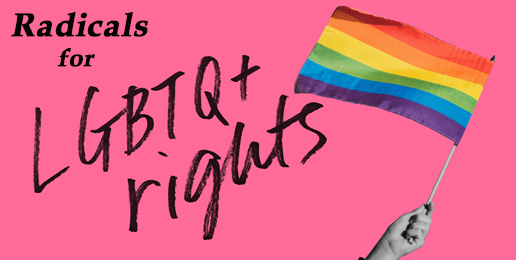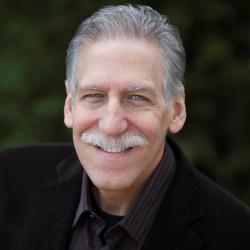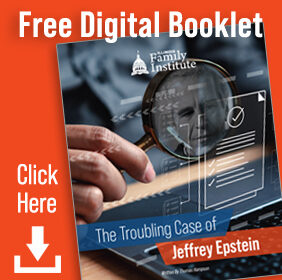
If Hitler had clearly articulated his demonic plans from the beginning, very few Germans would have followed him.
In the same way, it was only after Fidel Castro came to power that he openly declared that he was a Marxist-Leninist. Had he done so earlier, clearly and in no uncertain terms, he would have undermined his efforts to win the masses.
To be sure, there are some radicals who openly declare their destructive ideas up front, like the White supremacist, so-called Christian Nick Fuentes, who has stated that when his side comes to power, they will impose a death penalty on Jews and others. (Not surprisingly, Fuentes has also praised Hitler.)
This, however, virtually guarantees that such movements will remain relatively small and insignificant.
They will certainly not captivate the masses unless the nation as a whole loses its mind.
In contrast, radicals on the left or right who want to persuade large sectors of the population often adopt a different strategy, cloaking their extremism in more moderate views. Then, after the masses have become sufficiently duped and desensitized, the more extreme goals can easily be introduced.
Think for a moment about the trajectory of LGBTQ+ activism.
Had national leaders said up front, “We look forward to the day when thirteen-year-old, trans-identified girls can have full mastectomies and young men can compete against young women in sports,” they would have garnered much less support.
Had they said, “We look forward to the day when Christians will be jailed if they refuse to grant gay marriage licenses, and we can’t wait to see drag queens reading to toddlers in libraries,” they would have been rejected outright. And had they been represented primarily by nearly naked men whipping each other at gay pride events, their movement would have fizzled within months.
This was something fully recognized by leading gay strategists.
They understood that a change in strategy was needed if they were to change the thinking of the nation. As stated by Marshall Kirk and Hunter Madsen in their watershed 1989 book After the Ball: How America Will Conquer Its Fear and Hatred of Gays in the ’90s,
“The gay revolution has failed.
“Not completely, and not finally, but it’s a failure just the same. The 1969 Stonewall riot – in which a handful of long-suffering New York drag queens, tired of homophobic police harassment, picked up rocks and bottles and fought back – marked the birth of ‘gay liberation.’ As we write these lines, twenty years have passed. In those years, the combined efforts of the gay community have won a handful of concessions in a handful of localities. Some of those concessions have been revoked; others may be. We should have done far better.”
So, rather than go on with the strategy of, “We’re here, we’re queer, get used to it,” a new advertising strategy would be employed, one in which gay couples would be presented in more conservative, mainstream ways, even if some of that presentation was dishonest.
As to the gay objection that such ads would “Uncle Tommify” gays, since the ads were lies – in Kirk and Madsen’s words, “that is not how all gays actually look” and “gays know it and bigots know it,” the authors replied, “Yes, of course, we know it, too. But it makes no difference that the ads are lies; not to us, because we’re using them to ethically good effect, to counter negative stereotypes that are every bit as much lies, and far more wicked ones; not to bigots, because the ads will have their effect on them whether they believe them or not.”
In the end, gay activism succeeded by being for marriage – in a radically new form – rather than against it, as the earliest gay activists were, viewing marriage as an outdated, abusive, patriarchal institution.
I recognize, of course, that many gay couples did want to “marry” and that this was not just a strategic ploy.
Even so, had the larger goals of radical gay activists been introduced first, the push for gay “marriage” would never have made it to the Supreme Court, let alone resulted in the redefinition of marriage.
It’s the same with the radical leftist agenda that has infiltrated our schools, part of the long march, Marxist strategy of cultural transformation.
When these ideas were originally introduced, primarily in the 1960s, they were rejected by the society at large. “This stuff is crazy!” most people thought, and rightly so.
But these crazy ideas didn’t simply disappear.
Instead, they made their way into our institutions of higher learning, more covertly then overtly.
Then, when a critical mass had been reached and enough people had been indoctrinated, from children’s educators to media influencers and from activists to the younger generation at large, the ideas could be fully unleashed on the public.
As explained by Sen. Ted Cruz in his book Unwoke: How to Defeat Cultural Marxism in America, these 60s radicals
“knew they could not continue to mount a violent revolution against the government. Not if they wanted to be successful. They could no longer throw bricks through windows, scream at police officers, and hold unruly demonstrations in the public square if they wanted to win hearts and minds to their cause—at least not yet.
“For now, they had to take the ideas of Marx, the ones that they had worked so hard to bring to the United States, and quietly slip them into the minds of people in some other way.”
He continues,
“In other words, the activists who had once planted bombs in buildings and torched cars to bring about revolution would now have to calm down, get jobs, and pretend to be productive members of society (‘doing the job’). All the while, though, they would maintain their revolutionary ideas (‘preserving one’s own consciousness’) and work to insert those ideas into the work they did, indoctrinating as many people as possible in the process. Those who became university professors would treat figures like Karl Marx kindly while attacking capitalists and other revered figures from American history. Those who went into information technology would design systems with a subtle liberal bias. Those in journalism would work to transform the newspapers—and, eventually, the cable news networks and internet startups—into propaganda organs for the Left.”
Now, these radical ideas have been mainstreamed to the point that extreme (and, ultimately, oppressive) concepts like intersectionality and DEI have become a way of life.
The only positive is that, given enough time, the radicals on the left or right overplay their hand, resulting in a cultural pushback (or, cultural collapse, requiring a rebuild). In other words, when their full agenda is unveiled, it is still too extreme (or counterproductive) for most (or too extreme work at all).
That’s one reason the popularity of BLM has faded, one reason that the pushback against LGBTQ+ extremism continues to gain ground, and one reason that the intellectual and moral bankruptcies of our universities are being exposed.
As I commented elsewhere, with specific focus on LGBTQ+ activism, the very success of these radical movements will prove to be their undoing.




















